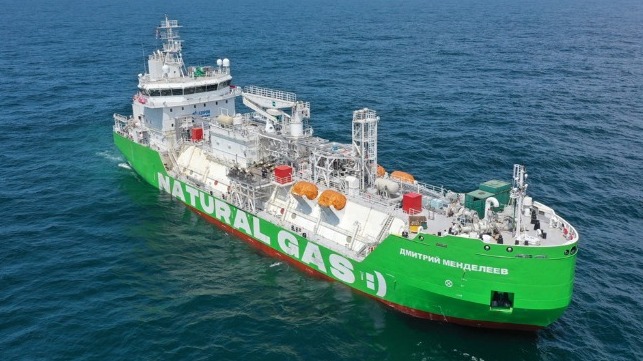Russia’s First LNG Bunker Vessel Delivered for Baltic Operations

Russia’s first Liquefied Natural Gas bunkering vessel was recently delivered to its owners and shortly will be repositioned from the shipyard in China to the Baltic to begin service. Named the Dmitry Mendeleev, the vessel will be operated by a division of Gazprom Neft for ship-to-ship fuel bunkering in the Gulf of Finland and the Baltic.
Designed and built by Keppel O&M, the 5,800m3 ice-class LNG bunkering vessel completed testing of its gas and cryogenic equipment, loading systems, pumps, and compressors for storage and unloading of LNG as part of its certification program. While it is the first LNG bunker vessel for Russia, Keppel notes it is the fourth completed at its yard, including South East Asia’s first LBV, Singapore’s first LBV, and Keppel is currently building dual-fuel vessels such as containerships and dredgers.
“Having successfully completed the construction of Russia’s first LNG bunkering vessel, Gazprom Neft is creating a new segment of gas fuel market in the country,” said Anatoly Cherner, Deputy Chairman of Gazprom Neft’s Management Board. “This year, we will commence commercial operations with LNG in the Baltic region.”
Gazprom plans to use the vessel for transportation and ship-to-ship fuel bunkering at ports including St Petersburg, Ust-Luga, Primorsk, Kaliningrad, and Vyborg.
The dual-class bunker vessel, the twelfth ice-class vessel delivered by Keppel O&M, was developed by its ship design and development company, Keppel Marine & Deepwater Technology. The vessel is compliant with the Arc 4 and Ice Class 1A notations from the Russian Maritime Register of Shipping and Bureau Veritas. All LNG-bunkering equipment is fully compliant with MARPOL and ECOS environmental standards.
The latest shipbuilding and LNG transportation technologies were utilized in the construction of the Dmitry Mendeleev. The vessel uses LNG as fuel for its power plant and an integrated digital system permits the vessel to be managed by just one person from the navigation bridge.
The hull has been optimized for independent ice navigation in medium first-year summer ice of up to approximately 30 inches thick. The vessel measures 328 feet in length and has a 62-foot beam.
